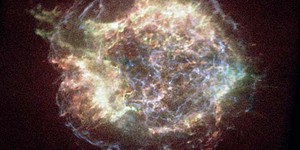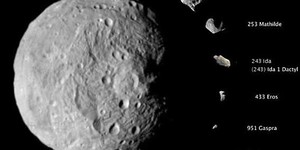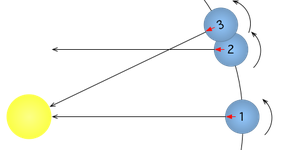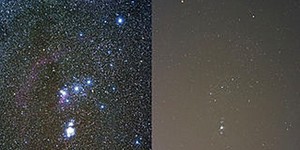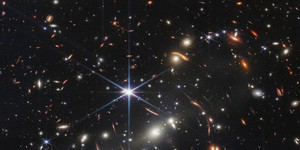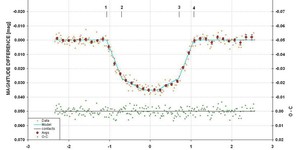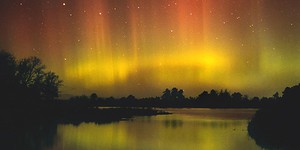Tenth Grade, Astronomy Science Projects (19 results)
Astronomy is science that will challenge your imagination. How many stars in a galaxy? How many galaxies in the known universe? How many strange worlds are out there on other planets, orbiting other stars, and what are they like? Is there life on planets besides Earth? The distances are mind-boggling; the numbers are immense.
|
Select a resource
Sort by
|
Have you ever seen amazing, colored images of objects in space, like stars or even entire galaxies? Some of these images were originally taken with forms of radiation that the human eye cannot actually see, like x-rays. In order to create the beautiful pictures you see in the news or online, scientists have to use an image-editing program to add color to them. In this astronomy science project, you will use raw x-ray data from NASA's Chandra X-ray Observatory telescope to create amazing…
Read more
Featured
Have you heard that garlic powder is supposed to inhibit the growth of bacteria? Which do you think would make a better disinfectant: a solution of garlic powder or a solution of bleach? This project shows you a straightforward way to compare the effectiveness of different disinfectants (or other antimicrobial agents), by measuring zones of inhibition on a culture plate.
Read more
Did you know that in addition to the Sun and planets, our solar system is filled with millions of asteroids, which are chunks of rock left over from the early days of its formation, or from collisions between larger objects like planets? Agencies like NASA track asteroids, not only because they might pose a threat to humanity by colliding with Earth, but because they can provide us with information about the history of our solar system, and even be useful for mining raw materials in space! In…
Read more
New
If someone asks you to draw a picture of a doctor, lawyer, or engineer, what first pops into your mind? The race and gender of the person you imagine might be shaped by your personal life experiences, such as whether you have family members in those professions, or what representations of them you have seen on TV or online. What do you think will happen if you ask an artificial intelligence (AI) program to generate the picture instead? Will pictures generated by AI reflect the true real-world…
Read more
Do you wake up at the crack of dawn, or do you need an alarm clock to wake you up each morning? It may surprise you that the two are not always in synch. Nowadays, we use Standard Time to set our watches instead of Solar Time. Which method of timekeeping is the most accurate? Get ready to synchronize your watches!
Timekeeping is the science of how to keep time with precision and accuracy. People have been finding ways of measuring time for thousands of years, usually based on the movements…
Read more
This is a great project for someone interested in both stargazing and photography. Bright city lights and even the light of the full Moon obscure the dimmest stars, which can make identifying constellations more difficult. In this astronomy science project, you will calibrate a digital camera to measure the skyglow in different locations. This can be a great tool to comparing the quality of different star viewing locations.
Read more
For an advanced science fair project, you can build your own telescope and learn how to use it to make observations of the night sky. Can you make your own observations to determine the orbital period of Jupiter's major moons?
The Dobsonian telescope, first built and popularized by astronomer John Dobson, is considered to be the best bang-for-your-buck if you want to build a good amateur telescope. The smaller the telescope's aperture the less expensive to build, but also the less…
Read more
New
Remembering to take medicine at the right time can be hard, especially if you need to take multiple medications at different times of day. It might not be a big deal if you forget to take your daily multivitamin, but for some people, forgetting to take medication at the right time can be dangerous. What if you had a device that could not only set off an alarm at the right time, but also automatically dispense the right pills for you? In this project, you will build an automatic medicine…
Read more
Sunspot activity has been monitored continuously since about 1700. The historical data shows that sunspot activity rises and falls in a roughly 11-year cycle. This project shows you how you can use both graphical and statistical analysis to look for patterns in cyclical data.
Read more
The James Webb Space Telescope (JWST) has shown us some amazing images of space, like its first "deep field" image (Figure 1). The JWST sees the universe in the infrared part of the electromagnet spectrum, which is not visible to the human eye. How, then, does it produce color images like the one in Figure 1? Scientists must colorize the images, or apply "false color." They map different bands of the infrared spectrum to colors of visible light, resulting in an image humans can view. Luckily,…
Read more
In astronomy, a transit (or astronomical transit) is a phenomenon when a celestial body passes directly between a larger body and the observer. As viewed from a particular vantage point, the transiting body appears to move across the face of the larger body, covering a small portion of it.
The word "transit" refers to cases where the nearer object appears smaller than the more distant object. Cases where the nearer object appears larger and completely hides the more distant object are known as…
Read more
How big a ruler would you need to measure the circumference of the Earth? Did you know that you can do it with a yardstick? (And you won't have to travel all the way around the world!)
Read more
Scientists have known for hundreds of years that sunspot activity waxes and wanes over a cycle that lasts approximately 11 years. In the 1970's, scientists discovered that the sun periodically blasts electrified gases into space, in huge outbursts called 'coronal mass ejections,' or CMEs. This project asks the question: do CMEs follow the solar sunspot cycle?
Read more
|
Explore Our Science Videos
Design a Seeding Machine
How to Make Magnetic Slime
Make a Thermometer - STEM Activity


